
Alcatel Submarine Network’s DC/FO Tech together with Equinor ASA wins the 2022 UTC Award
that were necessary to enable a non-O&G company initially unfamiliar with the expectations of the O&G industry to deliver a solution that is relevant to the needs of this industry."“ASN has long-standing expertise and field proven track record on the design of long distance subsea optical fiber systems and the design, manufacture and deployment of high reliability subsea products operating up to 8000 m water depth. Under Equinor’s guidance and support, ASN has leveraged on this expertise to develop and qualify DC/FO Technology, now adopted on Equinor projects and available to
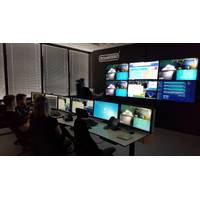
Oceaneering, BP Remotely Pilot ROV in UK from Shore in Norway
connectivity for the remote ROV piloting operations. This required a complex setup process to establish a bridge between the data networks of both companies, without compromising their respective cyber security policies. The result of the collaboration established a secure data link via subsea optical fiber to the worksite offshore," the company added.According to Oceaneering, the Stavanger-based remote piloting team operated the ROV for over 70 hours during the campaign program with 100% uptime. The implementation of this project was achieved by a global support team comprising members from
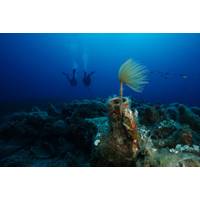
Meet NOUS: An Underwater ‘Artificial Mind’
a year later."NOUS" allows continuous (24/7) monitoring and protection of an underwater site using machine learning and image and sound processing algorithms.Briefly, it is a system consisting of an underwater array of self-cleaning cameras and microphones, which are either connected by optical fiber and electrical power conductor to the nearest shore, or to a floating platform on the sea surface. On the shore or on the platform there is a photovoltaic panel power supply and communication devices for Internet connection.On the occasion of the successful completion of the initial operation
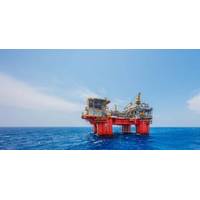
Silixa Claims 'World's first' as it Installs Distributed Acoustic Sensing (DAS) System at BP's Gulf of Mexico Field
Optical fiber sensors provider Silixa on Wednesday announced the successful installation, validation, and borehole seismic acquisition from a permanently installed fiber-optic Distributed Acoustic Sensing (DAS) system, Carina Subsea 4D, on BP’s Atlantis Phase 3 subsea field development.The Atlantis Phase 3 development involves a new subsea production system with eight new wells tied into the current Atlantis platform, 150 miles south of New Orleans. "The engineered fibre optic system enables high-definition seismic data acquisition along the entire subsea wellbore. This allows seismic
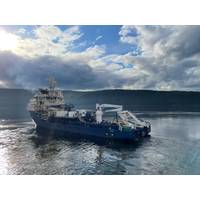
Russia Starts Operation to Lay Undersea Fiber Optic Cable through Arctic
Arctic port towns as well as the Kamchatka peninsula and Sakhalin.Alexei Strelchenko, head of the cable-manufacturing and laying company, said it will cost 65 billion roubles ($889 million) and be financed exclusively by the state.The cable is manufactured in the Arctic city of Murmansk using Chinese optical fiber and Russian components, Strelchenko said. A vessel departed Murmansk on Thursday to begin laying it near Teriberka.The project will require additional connecting cables to link to the global communications cable network for which foreign investment would be needed, said Andrey Kuropyatnikov,

Boreas D90: Digital Fiber-Optic Gyroscope (DFOG) Technology
than 40,000 products in the field and operating, globally in the automotive, maritime, subsea survey and offshore oil and gas sectors.In May 2021 Advanced Navigation debuted the BOREAS D90, touted as a new generation of closed-loop fiber-optic gyroscope.“Fiber-optic gyroscopes use a coil of optical fiber and measure an effect known as the Sagnac effect to determine rotation very accurately with no moving parts,” said Orr. “So, basically, they are the most accurate and reliable method for measuring angular velocity currently available. Boreas takes that technology into a new generation
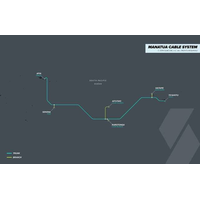
Manatua Consortium Approves Cable Lay
A crucial meeting of regional telecommunications leaders has approved the final stages of planning for the installation of the Manatua – One Polynesia Cable. The new optical fiber submarine cable will span the South Pacific transforming speed, capacity, resilience and affordability. The six landings will be in Tahiti and Bora Bora in French Polynesia, Rarotonga and Aitutaki in the Cook Islands, Apia, Samoa and Niue. It is the first fiber connectivity to Niue and the Cook Islands. Manatua is a groundbreaking collaboration initiated in April 2017 with the signing of an

Hydro Group Secures Japanese Partner
., Ltd.The Tokyo-headquartered firm will be the official distributor and business partner for Hydro Group’s subsea connectivity product range, including subsea electrical/optical cables and connection assemblies, in the Japanese market.Riken Dengu Seizo specializes in the sale of electrical and optical fiber cables and connectors, and also supplies electronic subsystems and componentry for the defense and aerospace sectors.Heather Andrade, Head of Sales at Hydro Group Plc, said, “The appointment of Riken Dengu Seizo as Hydro Group’s preferred business partner in Japan is an important
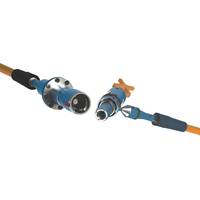
Fiber-Optic Connector Technology for O&G Ops
to copper, the high bandwidth of fiber allows richer data streams and much longer step-out distances (i.e., distance between subsea installation and surface facilities). Umbilical cables can easily reach lengths of 10-15 km, while pipeline cables, used for sensing, can extend to 40 km. Optical fibers also make superior distributed sensors. Changes in pressure or temperature modify the backscatter profile, allowing highly accurate measurements by monitoring the backscattered light. Because the velocity of light in a fiber is well understood, the backscattered light reveals information on



 February 2024
February 2024





